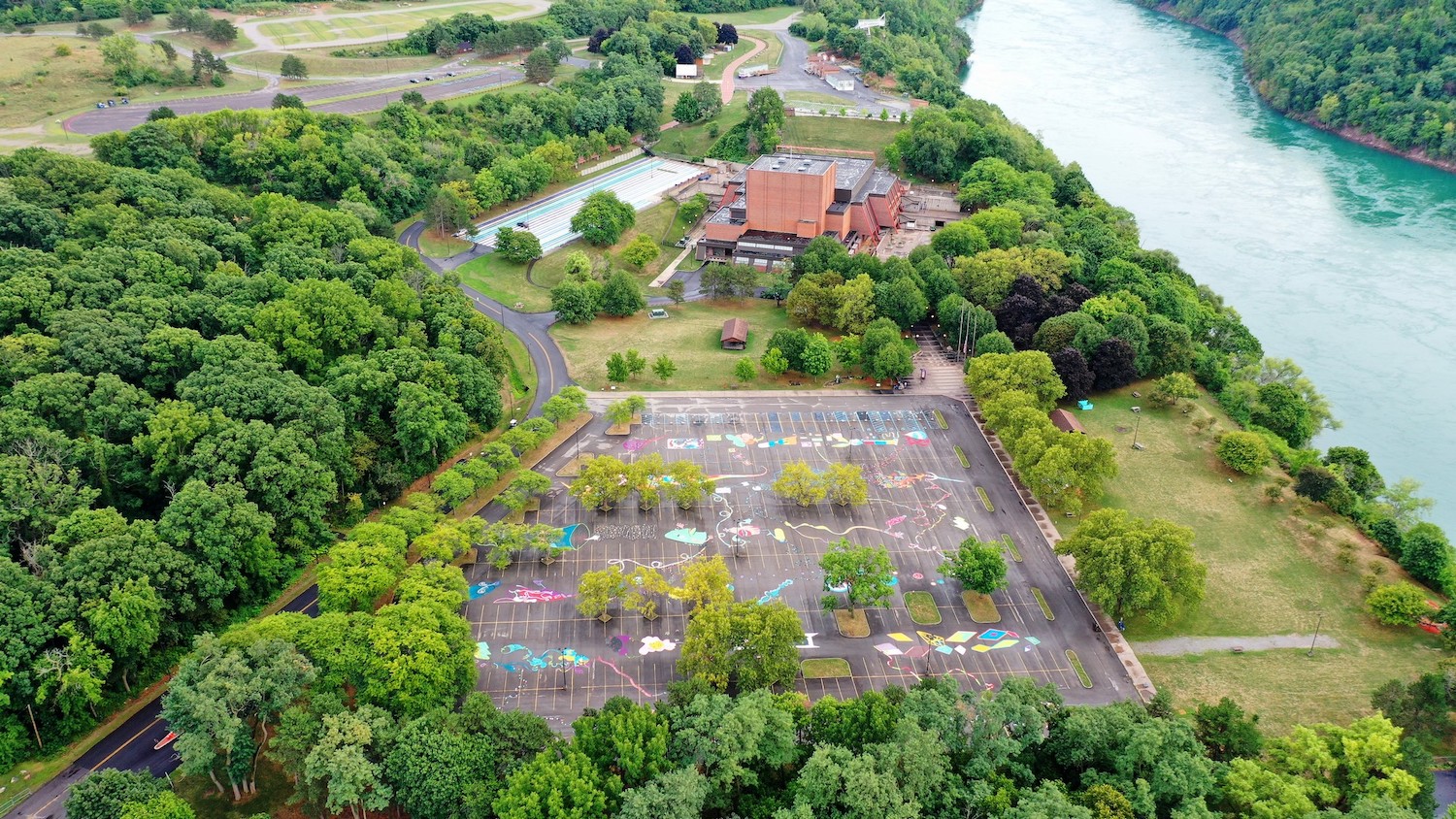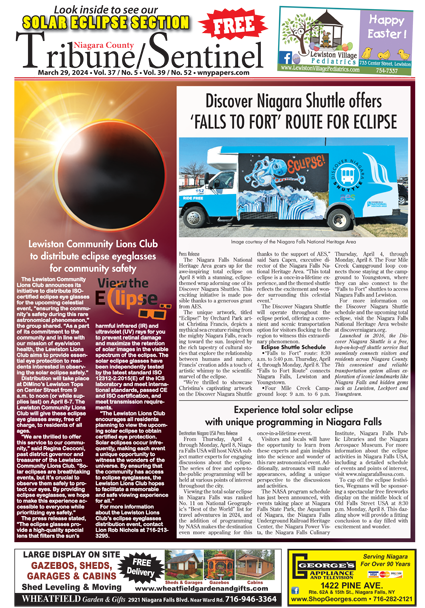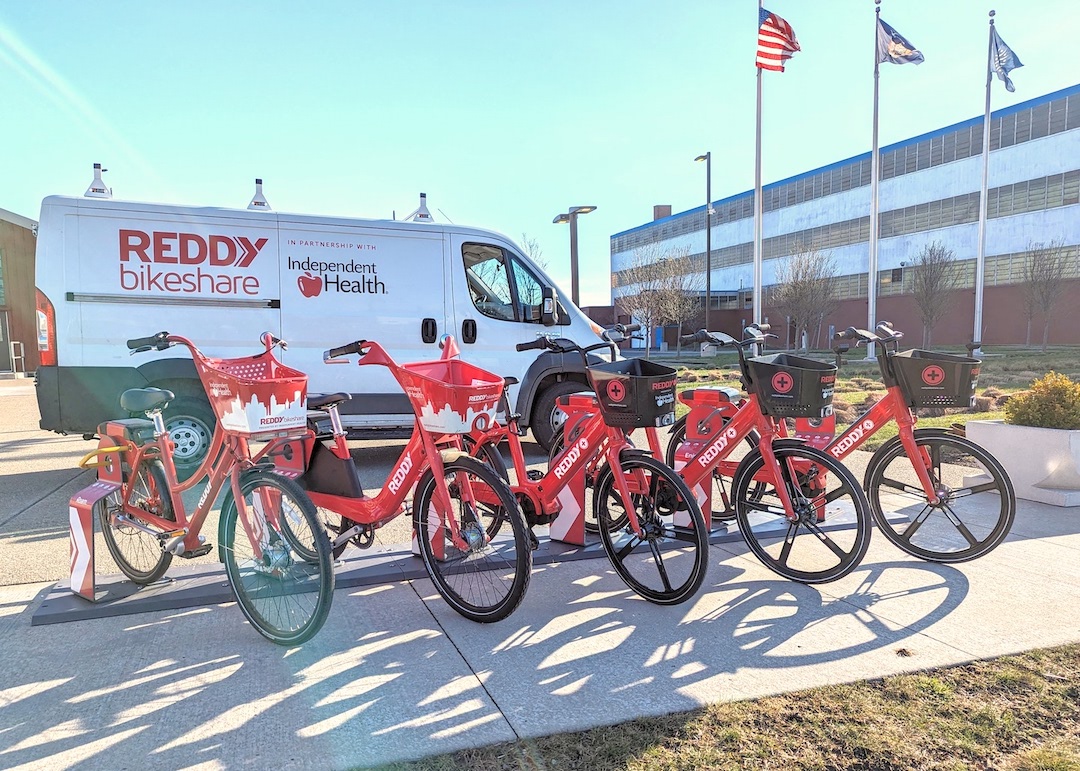Featured News - Current News - Archived News - News Categories
Statewide state of emergency remains in effect as historic winter storm continues to heavily impact Western New York and beyond
√ National Guard soldiers deployed to Western New York to assist those unable to travel for emergencies; state agencies surging additional assets to region, including plow trucks, dump trucks, UTVs and 4x4 vehicles
√ NYS Thruway (I-90) remains closed to all traffic between Exit 46 (Rochester, I-390) and Pennsylvania Border; Canadian border crossings at Peace Bridge, Lewiston-Queenston Bridge & Rainbow Bridge all remain closed
√ Numerous state highways and interstates in Erie and Genesee counties closed due to blizzard conditions; several counties in Western New York, Finger Lakes & North Country under states of emergency with local travel bans
√ Less than 60,000 power outages across state as of Saturday afternoon, with 35,000 outages in Western New York
Gov. Kathy Hochul on Saturday announced deployments of additional personnel and assets to areas in Western New York impacted by a historic blizzard causing impossible travel conditions in the Buffalo area and beyond. Hochul declared a statewide state of emergency ahead of the event, on Thursday. Friday evening, Hochul deployed more than 50 soldiers from the New York National Guard to assist New Yorkers facing emergencies and unable to travel. The Governor surged additional assets and personnel from numerous state agencies involved in the emergency response to assist these efforts and remove stranded motorists from their vehicles.
As temperatures remain well below freezing across the state today, with the threat of flash freezing and icy road conditions, Hochul urged New Yorkers in heavily impacted regions to stay home and to take measures to safely stay warm.
In a press release, she said, "New Yorkers are used to winter storms, but this one packed a punch and caused complete whiteout conditions in Western New York. However, additional help is on the way. Our state agency personnel and local emergency responders have been coordinating throughout the storm and we thank them for being away from their families this holiday weekend as they work to keep our communities safe. Please stay home today if you are in areas experiencing blizzard-like conditions, and know that roads will be icy across the state as we continue to experience freezing temperatures in the teens and single digits."
At a press briefing, the governor said, in part, “Last night, I had to bring in the National Guard. The conditions, the blinding snow, the zero visibility, absolute whiteouts – it may go down as one of the worst in history. People are comparing this to the dreaded ‘Blizzard of ’77,’ where Buffalo first got its reputation for having an unprecedented amount of snow. We broke that record again a month ago. …
“It is life-threatening, what is going on as we speak in Buffalo. Getting calls through the night from frightened neighbors where the temperature's been off for many, many hours – over the course of a day, day and a half. …
“That seems to be the epicenter of this storm that just doesn't seem to be moving on. It is concentrated there. And so, the National Guard had to come in to help with medical emergencies, people who cannot get to the hospital if necessary, to help doctors and nurses get to their jobs in hospitals and health care facilities, as well as helping our seniors who are stranded.
“So, we have had people stranded on the highways. I understand that the New York State Thruway, which remains closed in the western part of the region, we had over 20 people stranded in a very small stretch up until just a short time ago, as well as several hundred who've been stranded on various roads throughout the region.
“What happens in those circumstances? People literally trapped in their cars overnight. Fortunately, our State Police were able to make contact with every single individual, and we literally had snowplows going up to the vehicles and rescuing people, taking them out, and getting them into warming centers, because it is absolutely dangerous for anyone to be on the roads – and that includes our emergency vehicles.
“So, our National Guard, our first responders, our ambulances, our fire trucks are all getting stuck in the snow as well. In fact, almost every fire truck in the City of Buffalo is stranded; it is stuck in snow. And we're just getting through releasing of about 14 or so ambulances that were stuck, as well.
“So, you can imagine what's going on here. People who need help are being trapped because they cannot get the emergency response, because it's unsafe to be out there. So, we have search and rescue operations continuing throughout the region. And the basic message is, we're going to continue to keep warming centers open, encourage people to stay home. Roads are closed throughout Western New York and will be, probably through Christmas Day.
“And it's really sad for all the individuals who have not been able to see family members – airport delays, and not able to be driving because of driving bans. But it is more important that people stay safe. You'll have your holiday with your loved ones over New Year's and into the next year. But this is a weekend where it is absolutely dangerous in some parts of our state, particularly the western part, to be out there. So, we want to encourage people to stay where they are.
“In addition to having a statewide emergency declaration, I'll be asking the federal government for a declaration of emergency that'll allow us to seek reimbursements for the extraordinary expenses of all the overtime, and the fact that we've brought in mutual aid from other parts of the state. We've deployed individuals, whether it's the utility crews have come, but also making sure that we have all the vehicles we need. But literally, they cannot get through right now, no matter how many emergency vehicles we have, they just can't get through the conditions as we speak.”
State Response
The North County, Finger Lakes and Central New York regions all experienced peak wind gusts of more than 60 miles per hour during the event. In Western New York, peak wind gusts reached 79 miles per hour. The Buffalo and Watertown areas are expected to see snow totals of 3-5 feet by Monday, as a result of the storm.
Across the state, temperatures remain below 20 degrees, and several regions are experiencing single-digit temperatures and subzero windchills. This creates the risk for flash freezing and icy road conditions that will continue to impact statewide travel.
Snow and strong winds of more than 60 miles per hour will continue in Western New York and the North Country, creating blizzard-like conditions and zero visibility. Lakeshore flooding is expected to continue in areas off of Lake Erie and Lake Ontario.
Blizzard warnings, lake effect snow warnings, lakeshore flood warnings, wind chill warnings and winter storm warnings are currently in effect for various counties across the state.
For a complete list of weather watches, warnings, and advisories across New York, visit the National Weather Service website.
New York State Division of Homeland Security and Emergency Services Commissioner Jackie Bray said, "Remain vigilant today, as temperatures continue to stay well below freezing across the state. Take all necessary precautions if leaving home, check your local forecast and pay close attention to travel restrictions from local officials. Utility crews are working across the state to restore widespread power outages throughout the weekend. State agencies are also sending additional help to areas most in need. No matter where you live, it will be dangerously cold, so check on your neighbors and loved ones this weekend."
Agency Operations
•Division of Homeland Security and Emergency Services: The state's emergency operations center and the fire operations center are fully staffed and actively monitoring weather reports and incidents across the state to facilitate the state's response to the storm.
The Office of Emergency Management and The Office of Fire Prevention and Control have deployed personnel and equipment (UTVs) to remove stranded New Yorkers from vehicles in Western New York, along with resources to support warming shelters. DHSES is prepared to respond to additional requests for assistance from local governments across the state.
Across the state's 10 stockpiles, DHSES has the following deployable items to support storm-related needs:
•The New York State Division of Military and Naval Affairs is providing 53 soldiers from the New York National Guard to Western New York to assist New Yorkers with emergency medical appointments and search and rescue operations. These personnel and assets were expected to arrive by 2 p.m. Saturday.
The personnel and assets from this deployment include:
•Department of Public Service: New York's utilities have approximately 7,700 workers available statewide to engage in damage assessment, wire guarding, response, repair and restoration efforts. External resources secured previously by New York's utilities are being released and directly to National Grid and Avangrid to assist with their restoration efforts
National Grid has restored more than 86,000 customers, since the onset of the weather event, impacted by the various weather situations. They currently have 2,731 line, tree and service FTEs engaged in response, repair and restoration throughout their service territory. The additional 270 line FTEs, released from Con Edison, were prepared to begin work this morning.
NYSEG/RG&E have restored more than 130,000 customers, impacted by the various weather situations, since the onset of the statewide weather event. They currently have 2,141 line, tree and service FTEs engaged in response, repair and restoration throughout their service territory. The additional 270 line FTEs, released from Con Edison were prepared to begin work this morning.
•The New York State Department of Transportation is monitoring weather conditions and is responding with 3,450 supervisors and operators. Additionally, 75 ICS personnel are available to support the response to this event. All affected residency locations will be staffed for 24/7 operation throughout the duration of the event. Staff can be configured into any type of response crew that is needed, such as snow and ice, flood, chipper, load and haul, cut and toss, traffic signal, etc. All available equipment is fully engaged or ready to deploy.
A driving ban has been issued in Erie County and the City of Buffalo; and the following roads in Erie County are closed to all traffic until conditions improve:
Additionally, the Peace Bridge, Lewiston-Queenston Bridge and Rainbow Bridge border crossings are all closed.
A restriction for trucks "Trucks Use Right Lane" on Interstate 81 from Exit 32 (Central Square) to Exit 51 (Alex Bay) started at noon Friday. Additionally, several roads in the Hudson Valley are closed to do flooding or downed trees. NYSDOT crews are fully engaged in debris removal, assessing the situation, and will reopen the roads as soon as conditions permit.
Regional crews continue to engage in all-hazards preparations. Drainage structures are being checked and cleared of debris. To support response activities in critical areas, a total of 71 staff, including 65 plow truck operators, four supervisors, one assistant manager, one ICS support specialist, 13 plow trucks, two snowblowers, and one grader are being deployed to Western New York and the North Country.
They are distributed as follows:
Western New York
North Country
The need for additional resources (operators, trucks, mechanics, EOIs) will be reevaluated as conditions warrant throughout the event. Generator stockpiles are being readied for deployment to support dark signal response. Fleet mechanics in affected areas will be staffing all main residency locations 24/7 to perform repairs and keep trucks on the road.
Statewide equipment numbers are as follows:
For up-to-date travel information, call 511, visit 511NY.org or download the free 511NY mobile app.
•Thruway Authority maintenance facilities are staffed around the clock and responding to the storm with 678 operators and supervisors statewide. Thruway has shifted and deployed additional staff and equipment from its New York and Albany divisions to support snow and ice operations in Western New York. Deployed resources include large plow trucks and operators. Additional resources are on standby and ready to shift as needed.
All vehicles are banned on the New York State Thruway (I-90) from Exit 46 (Rochester I-390) to the Pennsylvania border, and on the Niagara Thruway (I-190) from I-90 to Exit 22 (Route 62) until further notice.
Thruway statewide equipment numbers and resources include:
Variable message signs and social media are utilized to alert motorists of winter weather conditions on the thruway. Follow the Thruway Authority on Twitter @NYSThruway and @ThruwayTraffic, or on Facebook: NYS Thruway Authority.
The Thruway Authority encourages motorists to download its mobile app, which is available for free on iPhone and Android devices. The app provides motorists direct access to real-time traffic information, live traffic cameras, and navigation assistance while on the go. Motorists can also sign up for TRANSalert emails, which provide the latest traffic conditions along the Thruway.
•New York State Police have deployed extra personnel and assets in the areas being most affected by the storm. Troopers are working with partner agencies in the extreme conditions to reach approximately 10 vehicles stranded on the New York State Thruway between exits 49 and 52, but efforts are being hampered by whiteout conditions with zero visibility.
So far, at least 45 people have been rescued from their vehicles. Troopers are also attempting to reach more than a dozen stranded motorists on I-81 and other secondary roads in Jefferson County. State Police has responded to approximately 700 storm-related crashed statewide.
•Office of Parks, Recreation and Historic Preservation: New York State Park Police and park personnel are on alert and closely monitoring weather conditions and impacts. Park Police have four motorist support teams (MSTs) using UTVs, and 4-wheel drive trucks available for deployment to assist stranded drivers. Parks operations staff have three MSTs available for deployment. Two sawyer crews are on standby to assist with clearing downed trees and branches from roadways.
Park visitors can check parks.ny.gov or call their local park office for the latest updates regarding park hours, openings, and closings.
•Department of Environmental Conservation police officers, forest rangers, emergency management staff and regional staff are on alert and monitoring the developing situation, and actively patrolling areas and infrastructure impacted by severe weather. DEC is coordinating resource deployment with agency partners, and all available assets – including sawyers – are positioned to assist with any emergency response.
DEC is advising backcountry users to be aware of and prepared for winter conditions, including high winds and extreme cold temperatures. Conditions are expected to be even more severe at high elevations.
Hochul’s team said, “Winter hiking and skiing safety and preparedness are extremely important, no matter your physical ability or destination. Properly preparing for winter conditions is essential for a more enjoyable and safer experience. During and immediately following periods of heavy snowfall, avoid open, exposed areas like bare summits, and use extreme caution when traveling on or near open slopes.”
Additional information is available at https://www.dec.ny.gov/outdoor/112826.html.
DEC reminds those responsible for the large-scale removal and disposal of snow to follow best management practices to help prevent flooding and reduce the potential for pollutants like salt, sand, oils, trash and other debris in snow from affecting water quality.
Hochul’s team said, “Disposal of snow in local creeks and streams can create ice dams, which may cause flooding in nearby areas. Public and private snow removal operators should be aware of these safety issues during and after the storm.”
Additional information is available at https://www.dec.ny.gov/docs/water_pdf/togs5111new.pdf.
Safety Tips – Winter Travel Safety
Hochul’s team offered the following:
The leading cause of death and injuries during winter storms is transportation accidents. Before getting behind the wheel, review these safety tips:
√ When winter storms strike, do not drive unless necessary.
√ Make sure that your vehicle is clear of ice and snow; good vision is key to good driving.
√ Always match your speed to the road and weather conditions. Plan your stops and keep more distance between cars.
√ Be extra alert and remember that snowdrifts can hide smaller children.
√ Make sure your car is stocked with survival gear like blankets, a shovel, flashlight and extra batteries, extra warm clothing, set of tire chains, battery booster cables, quick energy foods and brightly colored cloth to use as a distress flag.
√ If you have a cell phone or other communications device such as a two-way radio available for your use, keep the battery charged and keep it with you whenever traveling.
Extreme Temps
√ Be aware of wind chill – wind in combination with the actual temperature – that can cause an increase of heat loss to the human body.
√ Dress appropriately and avoid staying in the cold too long.
√ Wear a hat and gloves, when appropriate, with layers of clothing. Avoid unnecessary exposure of any part of the body to the cold.
√ Drink plenty of warm fluids or warm water, but avoid caffeine and alcohol. Stay active to maintain body heat.
√ Take frequent breaks from the cold.
√ If signals of hypothermia or frostbite appear, get out of the cold, slowly warm the individual and seek medical assistance. Frostbite symptoms include loss of feeling, a white or pale appearance in fingers, toes, ears and nose. Hypothermia symptoms include uncontrollable shivering, slow speech, memory lapses, frequent stumbling and drowsiness.
Heavy Exertion
Heavy exertion, such as shoveling snow, clearing debris or pushing a car, increase the risk of a heart attack. Follow these tips to stay safe after the storm:
√ Stay warm, dress warm and slow down when working outdoors.
√ Take frequent rests to avoid over-exertion.
√ If you feel chest pain, shortness of breath, or pain in your jaw radiating down your arm – stop and seek help immediately.
Power Outages
Winter storms can cause power outages. Review these safety tips before the lights go out so you know what to do in an emergency:
√ Call your utility provider to notify them of the outage.
√ Avoid all downed power lines and report them to your utility provider for repair; assume all downed lines have live electricity.
√ Use only flashlights for emergency lighting – candles pose the risk of fire.
√ Keep your refrigerator and freezer doors shut to keep food from spoiling. When in doubt, throw it out!
√ Do not use a charcoal grill or generator indoors, and do not use a gas stove for heat – they could give off harmful levels of carbon monoxide.
√ Turn off major appliances to prevent damage from a possible surge when the power comes back on – keep one light turned on so you know when power returns.
Home Heating
Heating equipment is one of the leading causes of home fire deaths. Keep loved ones safe by following these important steps:
√ Keep all combustibles at least 3 feet away from heating equipment.
√ Always plug appliances, including space heaters, directly into a receptacle. Never plug appliances into a power strip or extension cord.
√ Make sure there is a working smoke alarm in each bedroom, outside sleeping areas and on every level of your home.
For all non-emergency service needs before, during or after a storm, call 211 or visit 211nys.org. For more safety tips, visit the New York State Division of Homeland Security and Emergency Services Safety Tips website at www.dhses.ny.gov/safety.





























